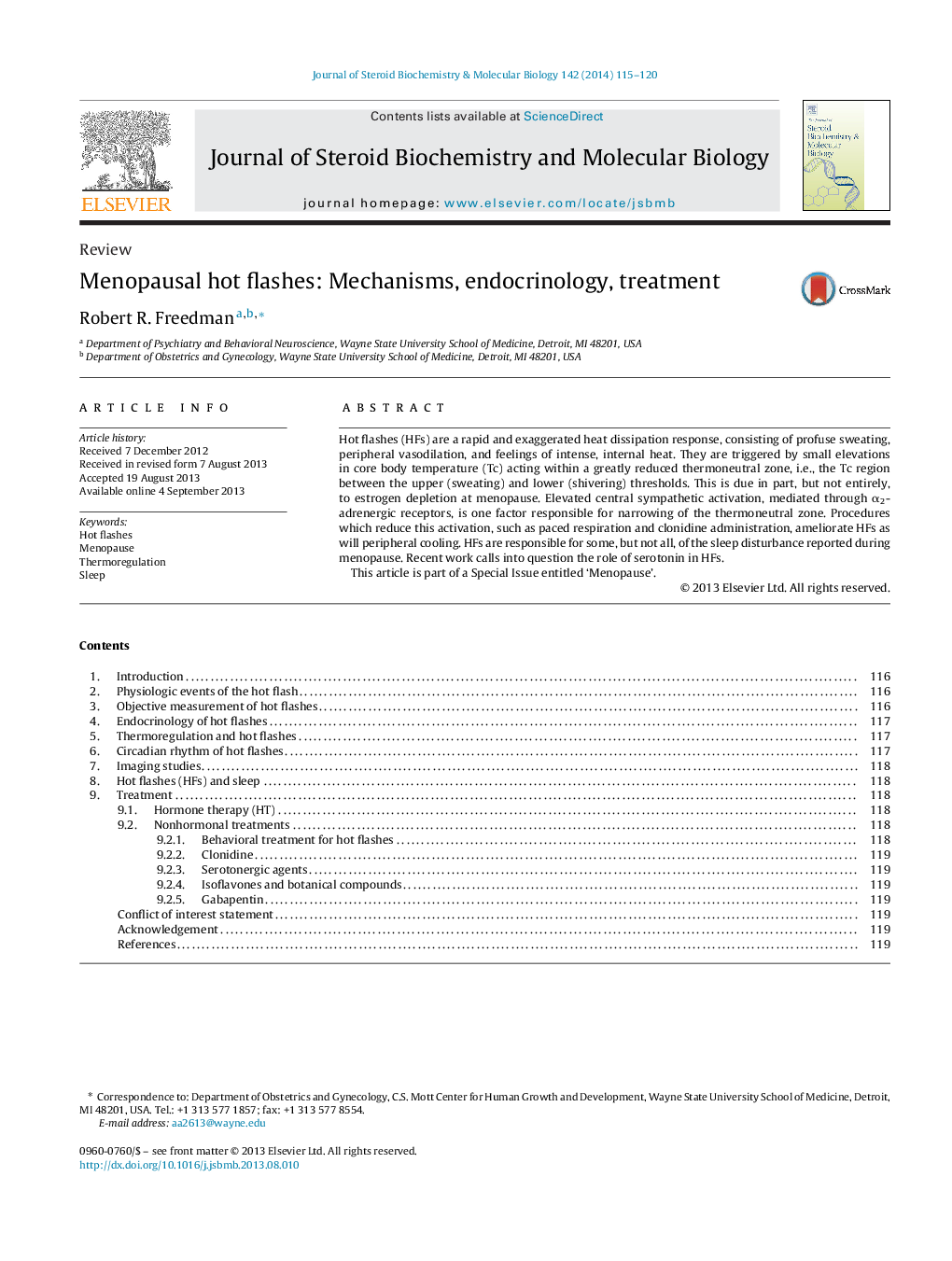| کد مقاله | کد نشریه | سال انتشار | مقاله انگلیسی | نسخه تمام متن |
|---|---|---|---|---|
| 1991504 | 1541008 | 2014 | 6 صفحه PDF | دانلود رایگان |
Hot flashes (HFs) are a rapid and exaggerated heat dissipation response, consisting of profuse sweating, peripheral vasodilation, and feelings of intense, internal heat. They are triggered by small elevations in core body temperature (Tc) acting within a greatly reduced thermoneutral zone, i.e., the Tc region between the upper (sweating) and lower (shivering) thresholds. This is due in part, but not entirely, to estrogen depletion at menopause. Elevated central sympathetic activation, mediated through α2-adrenergic receptors, is one factor responsible for narrowing of the thermoneutral zone. Procedures which reduce this activation, such as paced respiration and clonidine administration, ameliorate HFs as will peripheral cooling. HFs are responsible for some, but not all, of the sleep disturbance reported during menopause. Recent work calls into question the role of serotonin in HFs.This article is part of a Special Issue entitled ‘Menopause’.
Journal: The Journal of Steroid Biochemistry and Molecular Biology - Volume 142, July 2014, Pages 115–120
